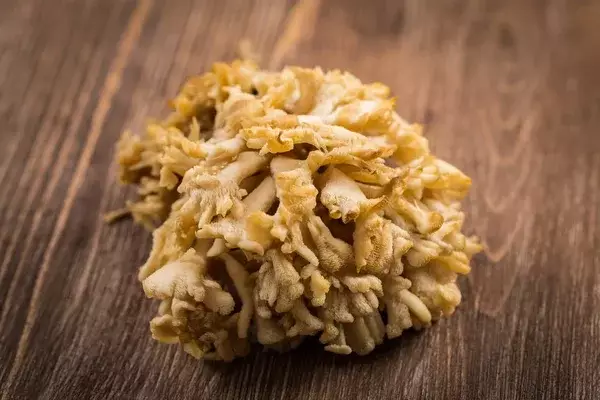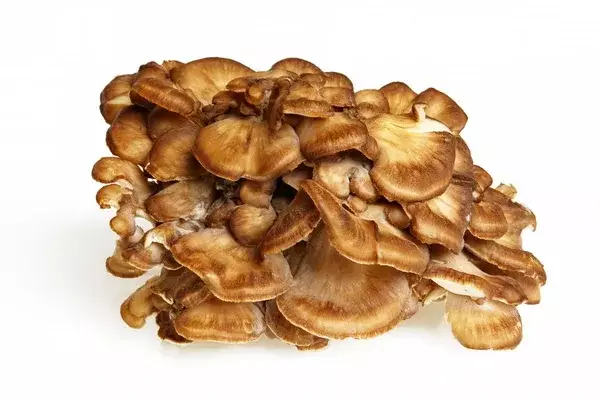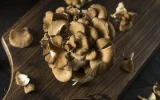Maitake Fruiting Conditions: Temperature & More
Maitake mushrooms, also known as hen-of-the-woods, require precise environmental conditions for them to grow. You'll need to provide them with the right fruiting conditions, taking into account the temperature, humidity, lighting, air, and substrate. In this article, we'll help you create the perfect environment for Maitake mushrooms to thrive.
To achieve successful Maitake fruiting, maintain a temperature range of 60–75°F, keep the humidity at 80–90%, provide indirect or diffused light, place the mushrooms in a well-ventilated area, and use a suitable substrate. Invest in a hygrometer and, if necessary, a humidifier to help you maintain these optimal conditions.
If you closely monitor these factors, your Maitake mushrooms will have the optimal environment for growth and fruiting. For now, let's get you a better understanding of the ideal conditions needed for Maitake fruiting.
Summary
- Maitake mushrooms require a specific temperature range, high humidity, some light exposure, proper airflow, and a suitable substrate to grow and fruit successfully.
- It takes time for the mycelium to fully colonize the substrate before fruiting begins.
- Maitake mushrooms are primarily grown commercially in indoor, controlled environments where the growing conditions can be carefully monitored and optimized for maximum yield.

On this page:
- Creating an Optimal Environment for Maitake Fruiting
- Ideal Temperature Range for Maitake Fruiting is 55°F to 65°F
- Optimal Humidity for Maitake Fruiting is 80–90%
- Lighting Requirements for Maitake Fruiting
- Air Circulation Helps Prevent Mold when Fruiting Maitake
- Preferred Substrate Materials for Maitake Fruiting
Creating an Optimal Environment for Maitake Fruiting
To achieve successful Maitake fruiting, make sure you carefully manage the following conditions:
| Factor | Condition |
|---|---|
| Temperature | Maintain a temperature range of 50–75°F (10–24°C) during the colonization stage and 60–75°F (16–24°C) in the fruiting stage |
| Humidity | Keep the humidity at 90–100% during the colonization stage and 80–90% during the fruiting stage |
| Lighting | Provide indirect or diffused light with 500–1000 lux intensity for 10–12 hours a day |
| Air | Proper air exchange is essential to prevent CO2 buildup and promote healthy fruiting |
| Substrate | Use a suitable substrate, such as hardwood sawdust blended with bran or wheat straw, to support Maitake growth |
Ideal Temperature Range for Maitake Fruiting is 55°F to 65°F
Finding the right temperature for your Maitake mushrooms is crucial for successful fruiting. The ideal temperature range for Maitake fruiting is between 55°F and 65°F (13°C and 18°C). It is important to maintain this temperature range throughout the fruiting process.
Some tips for controlling the temperature in your growing area include:
- Using a thermostat to monitor the temperature
- Adjusting your heating or cooling system as needed
- Placing your Maitake growing containers in a climate-controlled room or greenhouse
Temperature fluctuations can stress the mushrooms
Maitake mushrooms can be sensitive to temperature fluctuations. Sudden or dramatic changes in temperature can stress your mushrooms and inhibit their growth.
To avoid these fluctuations, it is important to monitor the temperature of your growing area closely and make gradual adjustments as needed. This can be achieved by:
- Checking the temperature several times a day
- Using insulation or curtains to help maintain a consistent temperature
- Avoiding direct sunlight on your growing containers, as this can cause rapid temperature changes
By maintaining consistent temperature conditions and understanding the importance of proper temperature management, you can ensure a successful fruiting process for your Maitake mushrooms.
Optimal Humidity for Maitake Fruiting is 80–90%
Maintaining the right humidity level is important for the growth and fruiting of Maitake mushrooms. The optimal humidity level for Maitake fruiting is between 80 and 90 percent. This high humidity helps to create a conducive environment for the mushrooms to grow and develop properly.
To achieve this level of humidity, you can use a hygrometer to monitor and measure the humidity levels in your growing area. Various methods can be employed to maintain appropriate humidity, such as the use of a humidifier, misting, or simply wetting the substrate.
Balancing humidity when fruiting Maitake

While high humidity levels are essential for proper Maitake fruiting, it's also important to maintain a balance. Excess humidity can lead to undesirable conditions that may harm your mushrooms, such as excessive wetness or mold formation on the substrate.
Here are some tips for balancing the humidity in your Maitake growing environment:
-
Air circulation: Proper air circulation ensures even distribution of humidity and prevents stagnant, moisture-laden air. Use a fan or maintain good ventilation in your growing area.
-
Misting: Misting your growing area with water can help to increase humidity; however, do this sparingly as excessive misting may lead to waterlogged substrates.
-
Monitoring: Regularly check your hygrometer to ensure that the humidity levels remain within the optimal range. Adjust your methods accordingly if you notice any issues.
By maintaining the optimal humidity level and ensuring proper balance, you can provide the best environment for your Maitake mushrooms to thrive and fruit successfully.
Lighting Requirements for Maitake Fruiting
Maitake mushrooms, like many other species, require light to initiate fruiting. While they don't rely on light for energy, they do need it to develop properly. To create ideal conditions, ensure your growing area is exposed to indirect sunlight or use a low-wattage LED light bulb. Natural light is preferred, but with LED lights, try to mimic the sunlight spectrum by using bulbs in the range of 5000–6500K.
Light intensity and duration to fruit Maitake
You don't need high-intensity light for Maitake mushrooms; a moderate intensity will suffice. Make sure the light reaches all areas of the growing surface for even development. Keep the duration of exposure between 10 and 12 hours per day, simulating typical daylight conditions in a natural environment.
To help you with light intensity and duration, consider the following tips:
- Place your growing area near a window that receives indirect sunlight.
- If using LED lights, set them up about 18-24 inches above the growing surface.
- Utilize a timer to automate the lighting system and maintain consistent daily cycles.
Air Circulation Helps Prevent Mold when Fruiting Maitake

Maitake mushrooms require a delicate balance of environmental factors to produce a bountiful fruiting harvest. To ensure proper air circulation, you should maintain a gentle airflow in your cultivation area. Good air circulation helps prevent mold and other contaminants from gaining a foothold in your growing environment. Some popular methods to establish airflow include:
- Using a fan set on a low setting, directed away from the growing area
- Creating passive air vents by cracking a door or window open
- Employing a small air pump with an air stone to introduce fresh air
Manage carbon dioxide and oxygen levels during fruiting
Maitake mushrooms, like all mushrooms, consume oxygen and release carbon dioxide. As the mushroom develops, the need for oxygen increases, and a buildup of carbon dioxide can inhibit growth. Thus, it is crucial to maintain proper gas exchange by managing the levels of both gases.
Here are some guideline values for carbon dioxide and oxygen levels during the fruiting phase:
| Gas | Concentration |
|---|---|
| Oxygen | Around 20% |
| Carbon Dioxide | Less than 5,000 ppm |
Regular air exchanges can help maintain these levels. If you notice the fruiting bodies suffering from abnormal shapes, it may be a sign that the carbon dioxide and oxygen balance in your growing space needs adjustment.
Preferred Substrate Materials for Maitake Fruiting
Choosing the right substrate for your maitake mushrooms is an essential step in their cultivation. The substrate provides the necessary nutrients for the mushroom's growth and influences fruiting conditions. In this section, we'll explore the preferred substrate materials and how to prepare them properly for optimal growth.
Your maitake mushrooms will thrive in a variety of organic materials rich in cellulose and lignin. Some preferred substrate materials include:
- Hardwood sawdust
- Wood chips
- Straw
- Corn cobs
It's important to use a substrate that is both easily accessible and cost-effective for your cultivation setup. Combining more than one type of substrate material can also improve the overall growth and yield of your maitake mushrooms.
Substrate preparation for Maitake fruiting

To ensure the success of your maitake cultivation, proper substrate preparation is crucial. Follow these steps to prepare your substrate:
-
Moisture content: Adjust the moisture content of your substrate to around 60-65%. A good rule of thumb is that the substrate should feel damp but not wet, and no water should be squeezed out when gently compressed.
-
Sterilization or pasteurization: In order to reduce contamination and ensure successful maitake colonization, sterilize or pasteurize your substrate. This can be done in several ways, including steam, hot water, or chemical methods.
-
Inoculation: Once your substrate has cooled to room temperature, inoculate it with maitake spawn, making sure to distribute the spawn uniformly throughout the substrate.
-
Incubation: Place the inoculated substrate in a suitable environment for mycelial growth. This includes maintaining appropriate temperature, humidity, and darkness.
After proper incubation, your maitake mushrooms will begin to fruit on the prepared substrate. Maintain appropriate environmental conditions throughout the entire fruiting process to ensure healthy and prolific growth.



